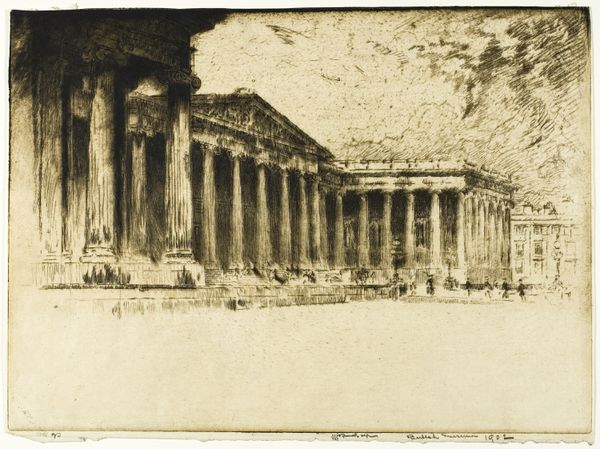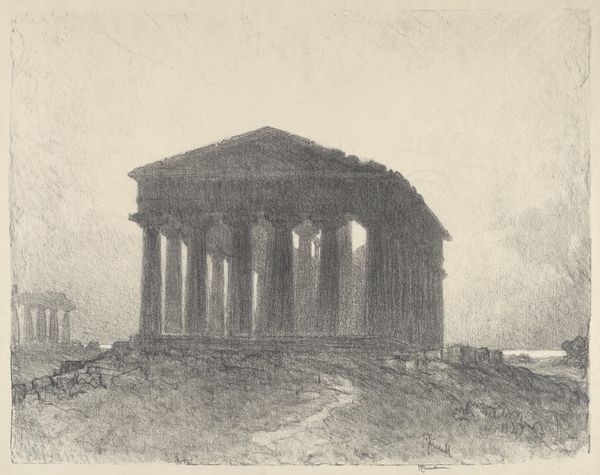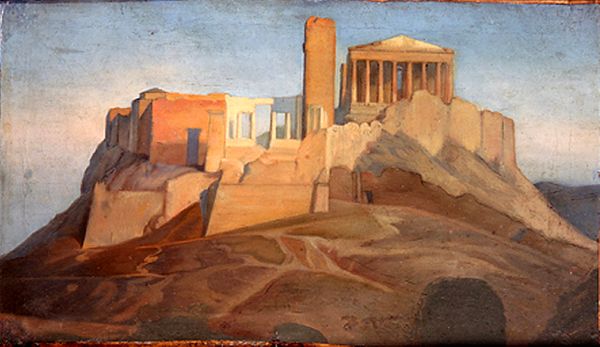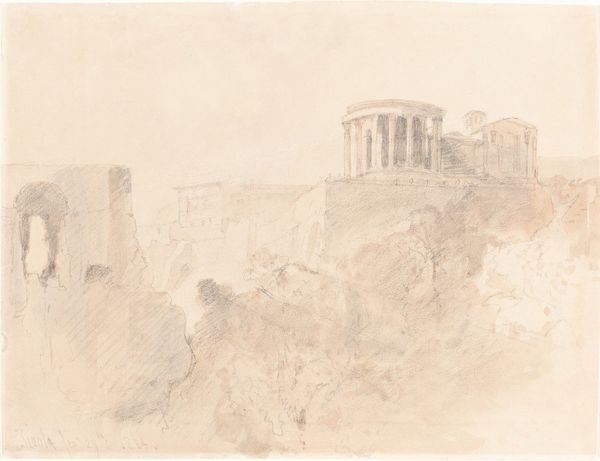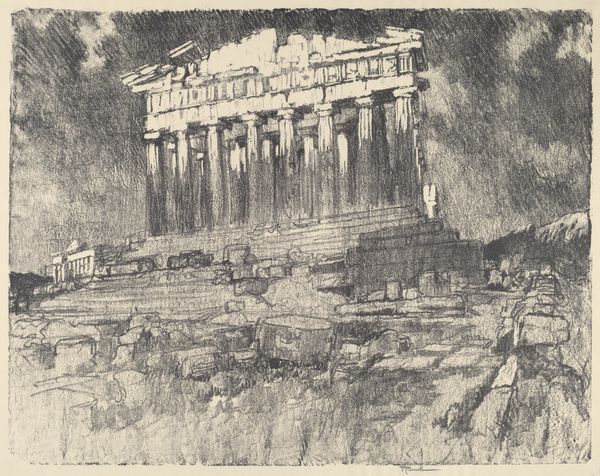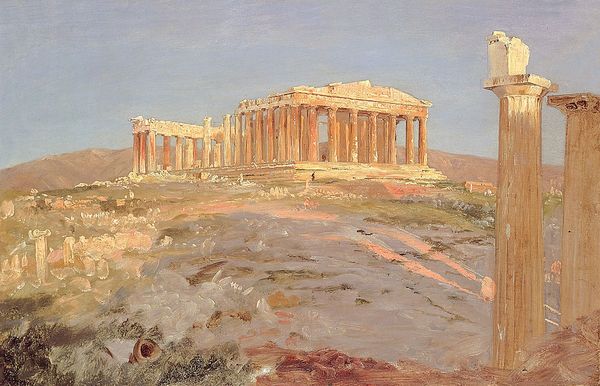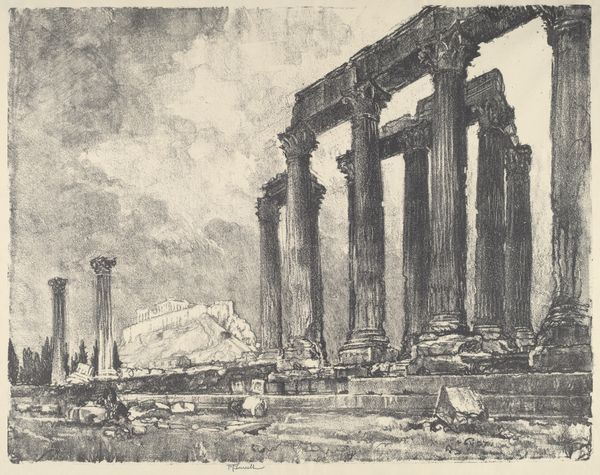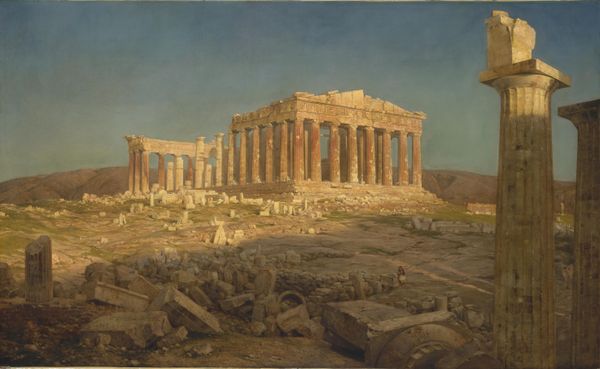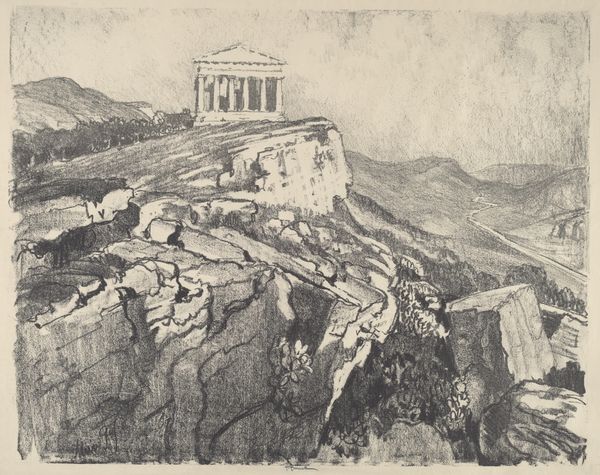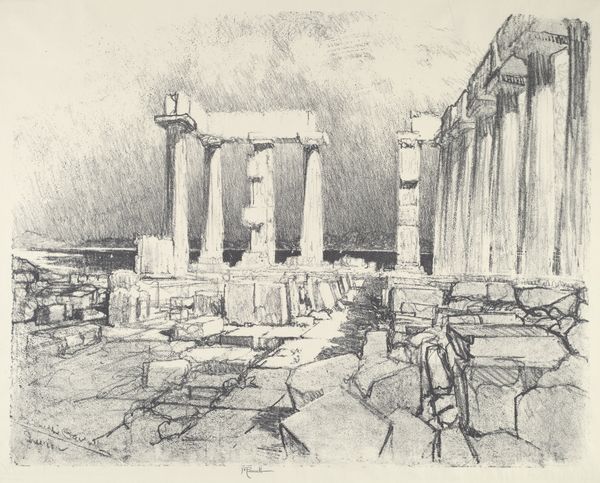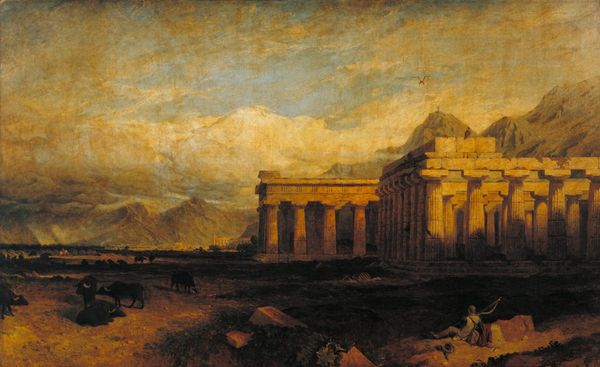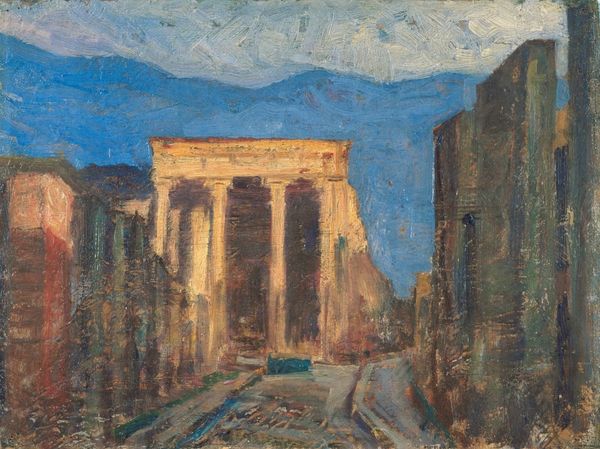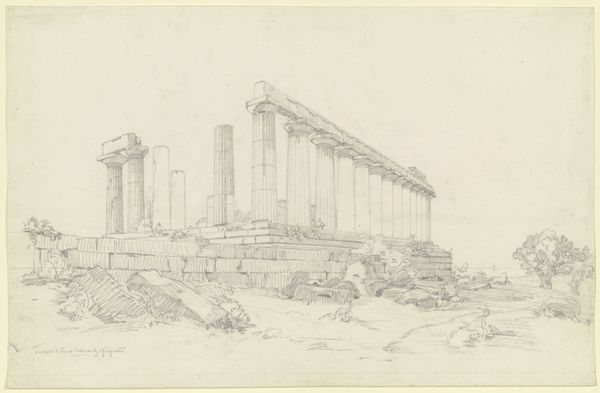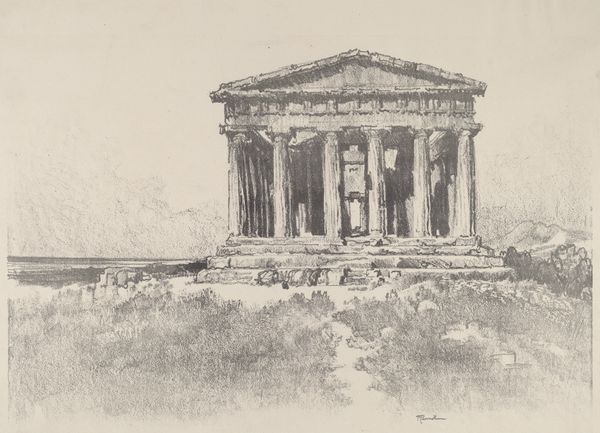
painting, plein-air, acrylic-paint, impasto
#
painting
#
plein-air
#
greek-and-roman-art
#
landscape
#
acrylic-paint
#
impasto
#
cityscape
Copyright: Public domain
Curator: Take a look at this depiction of the “Parthenon at Night”, by Frederic Edwin Church. This work really captures a plein-air, landscape-style of art with some very interesting impasto qualities achieved through the use of acrylic paint, an intriguing rendition of the classic cityscape of the old monument! Editor: There’s something quite haunting about the composition. The dramatic contrast between the dark sky and the ruddy glow emanating from the structure really dominates the mood. It feels… spectral. Curator: Well, it is the Parthenon. And the social context around that magnificent structure certainly impacts our experience with the piece! The Parthenon stood as a symbol of democracy and Athenian power. By capturing it at night, shrouded, perhaps the artist suggests themes of memory and lost glories? Editor: Maybe, but focusing on form, the strong verticality of the columns is counteracted by the horizontality of the entablature. It really lends a feeling of architectural tension, especially offset against the very expressive brushstrokes describing the ground beneath it. Curator: Indeed, and the use of impasto further underscores that expressiveness, it does bring the city and landscape into harmony by capturing both textures together with common medium characteristics. Editor: To that effect, note the restricted palette. Earthy browns and shades of red that might be a depiction of ancient civilizations of Greek and Roman art movement, set against very stark lighting. It amplifies the stark geometric forms and evokes both decay and timelessness in that very combination. Curator: It would be fascinating to know more about Church’s intent, when set against his broader interest in landscape and sublime experiences. Consider his positioning; a historical landmark from a distance, not glorified in detail. Is he exploring its ongoing relevance in contemporary society? Editor: I wonder what effect, or affect, a daytime study would yield in comparison to this! Maybe, by setting it at night Church wanted us to engage not just with its historical grandeur, but also its power as a myth, one burnished and kept alive, by the flickering candlelight and impasto glow! Curator: Precisely. The layers of historical meaning intertwined with the visual, create an interpretation far beyond architectural portrayal, especially considering it may be an acrylic on panel rendering using a somewhat modernist texture from impressionism and landscape. Editor: The artwork has made me reflect on the power of stark compositions, in an artwork dominated by impasto acrylic strokes, the building’s form achieves to be captured, and maybe it can deliver a mood to make its cultural symbol reverberate. Curator: Agreed, focusing on those historical reverberations underscores this painting's public role of memory! It makes you wonder about what the artist knew of its social contexts and institutional weight of such historical structures.
Comments
No comments
Be the first to comment and join the conversation on the ultimate creative platform.
